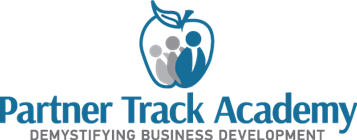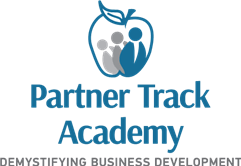The Struggle to Create Authentic Diversity & Inclusion Cultures and How to Reengineer for Results
As published in the July 2, 2020 issue of The Recorder.
Law firms have much to gain by recruiting and retaining diverse talent. It is not only morally and culturally appropriate to do so, it also impacts the bottom line. Diverse professional services teams are sought after by important clients and have been proven to deliver exceptional results. In response, most firms have expressed a strong desire to change. Good firms hire implicit bias training facilitators. They provide internal mentors to nurture new legal talent. They appoint a partner or a committee of lawyers to oversee progress. So why is the legal industry still woefully behind in its ability to retain and promote a broad array of talent, particularly lawyers of color?
Without deploying an assorted and coordinated group of problem-solvers to formulate solutions and exchange information, the brand messaging tactics law firms have adopted regarding diversity and inclusion are simply acts of theater. It misses the big picture. For real success, firms must take a close look at the infrastructure responsible for supporting the recruitment, advancement and retention of diverse associates. It is not enough to hire a director or a few managers and put them in charge of diversity and inclusion if your entire firm is not building a path to success.
In a time when firms are severely cutting budgets, they must still:
- Invest in technology systems that provide transparency between diverse talent, administrative support teams, clients and management.
- Invest in benchmarking and review quantitative data regarding the cost of hiring, training and retaining diverse associates.
- Invest in the time it takes to analyze information from varied sources and formulate an action plan.
It Takes a Village to Raise a Partner
The career path of a lawyer is similar to the life cycle of any human being. It begins in a kind of birth and concludes in retirement. Think of the firm as providing the same family and community structure required to foster and develop a successful partner who might be the first in their family to obtain a law degree. For the best results you will need archetypes representing parents, relatives, external helpers in the way of teachers/tutors, doctors and religious advisers. Communication between all of these providers is key. Your village must commit to transparency between human resources, professional development, finance, technology, and marketing and business development. Integrated projects focused on eventual advancement to partnership include:
- Re-developing metrics and monitoring and tracking progress in business development. There must be a budget for sponsorships in programs such as the Leadership Council on Legal Diversity or statewide organizations such as the California Minority Counsel Program. There should also be funds set aside for customized training to help with networking and social media skills, consultative sales skills, and article writing and placement. All activities must be recorded into a central database.
- Developing client relationship protocols to ensure diverse talent has exposure to appropriate contacts and projects and matching skills and competencies with client needs, firm expectations and workload.
- Assimilating financial and performance benchmarks and openly discussing progress with the associate and appropriate leadership.
- Creating a safe space for interactive and confidential discussions between diverse associates and administrative personnel.
- Making promotions, lateral hiring and succession planning a family affair and integrating the best firm-wide professionals (lawyers and legal services providers) into the long-term process.
What Are Your Clients Doing?
While the partnership structure may be helpful in the practice of law, it is not the easiest business platform for accomplishing major overhauls. Law firms are challenged by communication gaps between practice areas and geographies. Additional boundaries are created between lawyers and administration. Though firms admit they have not been as effective as their corporate clients in nurturing diverse talent, they fail to look to their clients for operational and structural examples. This is surprising since many studies and reports have been generated (almost entirely by lawyers and lawyer-only associations) about the law firm diversity gap and point to the disparity between law firms’ abilities to make meaningful progress and the more visible evolvement seen in large corporations that have fared better in the last decade to build inclusive cultures, particularly in regard to race, as gender and sexual orientation equality are not as impacted by socioeconomic standing.
Obviously, in most corporations, a law degree is not required for advancement to the top and it should be noted that the most diverse ranks within law firms can be seen within administration. The development of the back-office law firm workforce has been far more blind to race, gender, gender identity and sexual orientation. These executives can and should bring value to the firm in a multitude of ways, just as their counterparts are doing so in the corporate world.
Why not leverage your diverse administrators and your clients’ successes? Consider developing a round table consisting of their diversity leadership and your key personnel. Let a broad mix of your administrative leaders drive the discussion. Questions they may need to ask include:
- Do you have any recruitment and/or competitive compensation best practices you are willing to share?
- What roles and reporting structures are your department leaders leveraging to ensure effective recruiting, nurturing and advancement of diverse talent?
- How are you retaining talent and mitigating departures?
- What types of outside vendors do you leverage to support training and retention of critical talent?
- Can you recommend any software or sophisticated technology solutions that assist in monitoring and tracking results related to how diverse employees navigate your culture and customer demands?
Building a New World
Once you decide to transform, you will have to rely on trusted advisers, internal and external, to execute on your plan. The big picture requires strategies and tactics best provided through a mix of vocations. Consider hiring administrative professionals who have outside experience with infrastructure and diversity issues. If your human resources or marketing professionals have only seen the inside of a law firm, no matter how impressive the firm, you are likely to wind up with more of the same. Look to other industries to recruit from and supplement the staff with employees who have knowledge of proven diversity methodologies. If you are wary of hiring full-time employees from another industry because you fear they won’t be able to navigate your culture (which speaks to overall issues about inclusion), hire the best consultants for a set amount of time and get your money’s worth by promising to listen.
Trust the people you hire and let them do their job. If your firm can’t compete with salaries demanded by your best diverse candidates, let your human resources and finance leaders develop compensation models and matter assignments to attract talent. If your diverse associates are struggling to bring in a book of business, provide them with customized coaching. If your diverse partners are leaving for greener pastures, hire a mediator to uncover the dissatisfaction and vow to remedy the problems. Collect all of your findings in a central database.
Law firms are in the conflict business, but it is well-known that many lawyers will go to incredible lengths to avoid conflict, particularly in regard to how their firm is managed. Devising a revolutionary platform to support minorities and professionals who have different backgrounds from your existing leadership will require courage and strength of character. It will also require an understanding that conflict is not bad, it is necessary and protections are needed for those articulating new opinions and new methodologies.
Brenda Pontiff is the senior marketer liaison for the Legal Marketing Association’s Los Angeles steering committee. She is also the managing principal of Partner Track Academy and provides business development training for senior associates navigating partnership candidacy.
Reprinted with permission from the July 2 issue of The Recorder © 2020, ALM Media Properties, LLC. Further duplication without permission is prohibited. All rights reserved.




